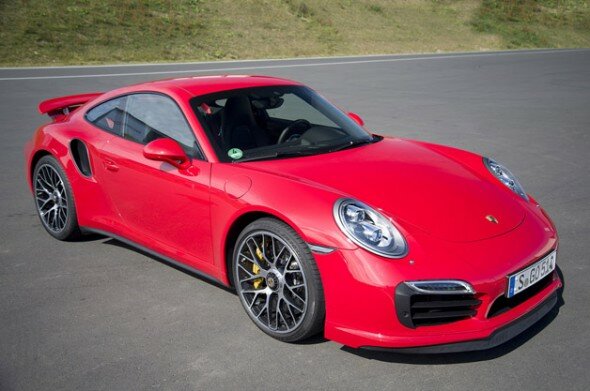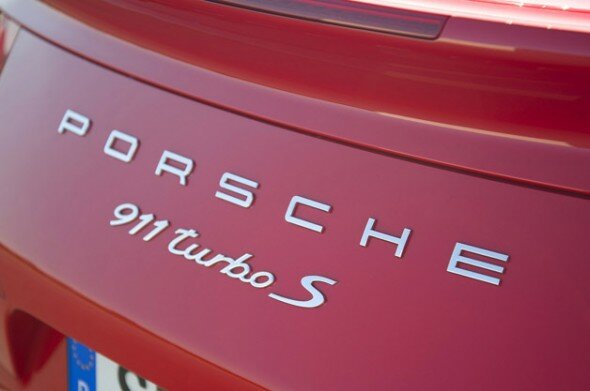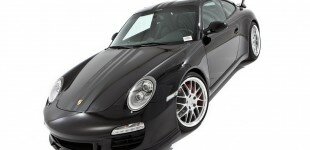Featured Posts
Protected: Beta Testing
2014 Porsche 911 Turbo S

Engine: Twin-Turbo 3.8L | Flat-6 Power: 560 HP / 553 LB-FT | Transmission: 7-Speed DCT | 0-60 Time: 2.8 Seconds (est.) | Top Speed: 198 MPH | Drivetrain: All-Wheel Drive | Curb Weight: 3,538 LBS | Seating: 2+2 | Base Price: $182,050
Walter Röhrl was carving up the circuit in the Porsche 911 Turbo S like a skilled Jedi Master – and I was sitting next to him, mesmerized by the breathtaking show. I had strapped myself securely into the front passenger bucket of the all-new coupe less than a minute earlier, expecting nothing more than a few quick laps around a track at the hands of another celebrated race driver. Been there, done that. Many times, actually.
Yet this was different. Röhrl was not only calculated and methodical in his approach, but his rally-tuned cerebrum appeared to be actively reading available grip levels while he was effortlessly tossing the all-wheel-drive Porsche into each corner at gut-wrenching speeds. His hands were moving rapidly, sending tiny steering corrections to the front tires, and he was using every inch of the track to extract more speed. We launched over a curb, dropped a wheel in the dirt and then drifted around a wide off-camber turn. His human precision and focus was astounding, and the performance he was extracting from the machine was just short of breathtaking.
Few drivers are as gifted as Walter Röhrl – and few vehicles are as capable as the new Porsche 911 Turbo.

Automotive history was made when Porsche launched its first Turbo model in 1973, showing a prototype of the new car at the Frankfurt Motor Show. Unlike its naturally aspirated 911 siblings, the silver coupe on display was equipped with a 3.0-liter flat six-cylinder engine breathing pressurized air courtesy of a single turbocharger. At the time, few realized how significantly forced induction would change the game.
This rear-mounted engine was rated at 260 horsepower, giving the coupe a top speed of 155 miles per hour. The performance was excessive for a street car of the era, but Porsche had an ulterior motive; it was building the required 400 units to meet GT motorsport homologation rules. Yet the automaker greatly underestimated the popularity of its new street-legal race car. In response to demand, the company doubled – and then tripled – production. By 1977, Porsche had sold 2,876 copies of the Type 930 Turbo 3.0, and its enthusiast customer base was begging for more. The German automaker didn’t hold back.
More than four decades after its initial debut, Porsche has introduced its eighth-generation Turbo for the 2014 model year. The new coupe, built on the Type 991 platform that was launched just last year, leapfrogs its predecessor in nearly every category – pushing the envelope has always been a Turbo tradition.

Even though the outgoing Type 997 Turbo remains a formidable street car, Porsche engineers knew they could raise the bar with the all-new Type 991, as its platform is vastly superior. In addition to the fresh chassis with an aluminum-steel composite construction that is stiffer and 13-percent lighter than its predecessor, the new Turbo models feature a slew of significant upgrades above and beyond the already capable Carrera and Carrera S. These include all-wheel steering, adaptive aerodynamics, a redesigned all-wheel-drive system and a more powerful engine. The flagship Turbo S model pushes the envelope even further, with standard active Dynamic Chassis Control (PDCC), ceramic brakes (PCCB), wider forged wheels, LED headlights and unique badging.
The transformation from standard Carrera to Turbo involves more than the addition of two Variable Turbine Geometry (VTG) turbochargers. It is an exhaustive process that affects nearly every mechanical aspect of the vehicle, and most of the enhancements remain buried beneath the car’s new bodywork.
Speaking of physical appearance, in the late ’70s and early ’80s, passers-by had no problem distinguishing the early 930 Turbo from its lesser brethren – its wildly flared rear quarters and distinctive “whale tail” spoiler were a dead giveaway from a quarter mile down the road. While many lament that this aggressive styling had been lost with more recent models, Porsche is reversing the trend with this latest iteration. The new Turbo models are substantially wider than even the fat-bodied Carrera 4 models (by a full 1.1 inches), and their rear flanks feature a level surface “of more than a hand width” on each side to drive the point home. Seen from a distance, especially from the rear, the new fender sculpturing is aggressive and purposeful.

Buried deep within those wide fenders, and really only visible from below, is a twin-turbocharged 3.8-liter flat-six engine. The direct-injection powerplant features VarioCam Plus (variable valve timing and lift) and Variable Turbine Geometry (VTG) to develop 520 hp and 487 pound-feet of torque in standard configuration (selecting the optional Sport Chrono package boosts torque to 524 pound-feet). The range-topping Turbo S, which we drove for this piece, is boosted to 1.2 bar of intake pressure, and it boasts a 200-rpm higher redline allowing it to develop 560 horsepower and 516 pound-feet of torque (bumped up to 553 pound-feet with the optional Sport Plus package).
As it did with the GT3, Porsche has dropped the six-speed manual transmission option with the 991 Turbo and Turbo S. This leaves the automaker’s excellent seven-speed Doppelkupplung (PDK) automated dual-clutch gearbox as the sole transmission. Refined and updated, PDK has been designed with “virtual gears” that allow both oil-bath clutches to slip and provide gear ratios between the fixed sets (Porsche says it is wear-free). Power is sent to all four wheels through an electronically controlled Multi-Plate Clutch (PTM), and an electronic rear differential lock and Porsche Torque Vectoring (PTV+) are standard.
A MacPherson-type independent suspension is used up front, while a five-link independent setup is tasked with the role in the rear. Coilover shocks are standard at all corners, each working in conjunction with adaptive Porsche Active Suspension Management (PASM), which offers two driver-selectable programs. Electromechanical power steering is employed on both Turbo and Turbo S models.
Leave a Reply
You must be logged in to post a comment.
















